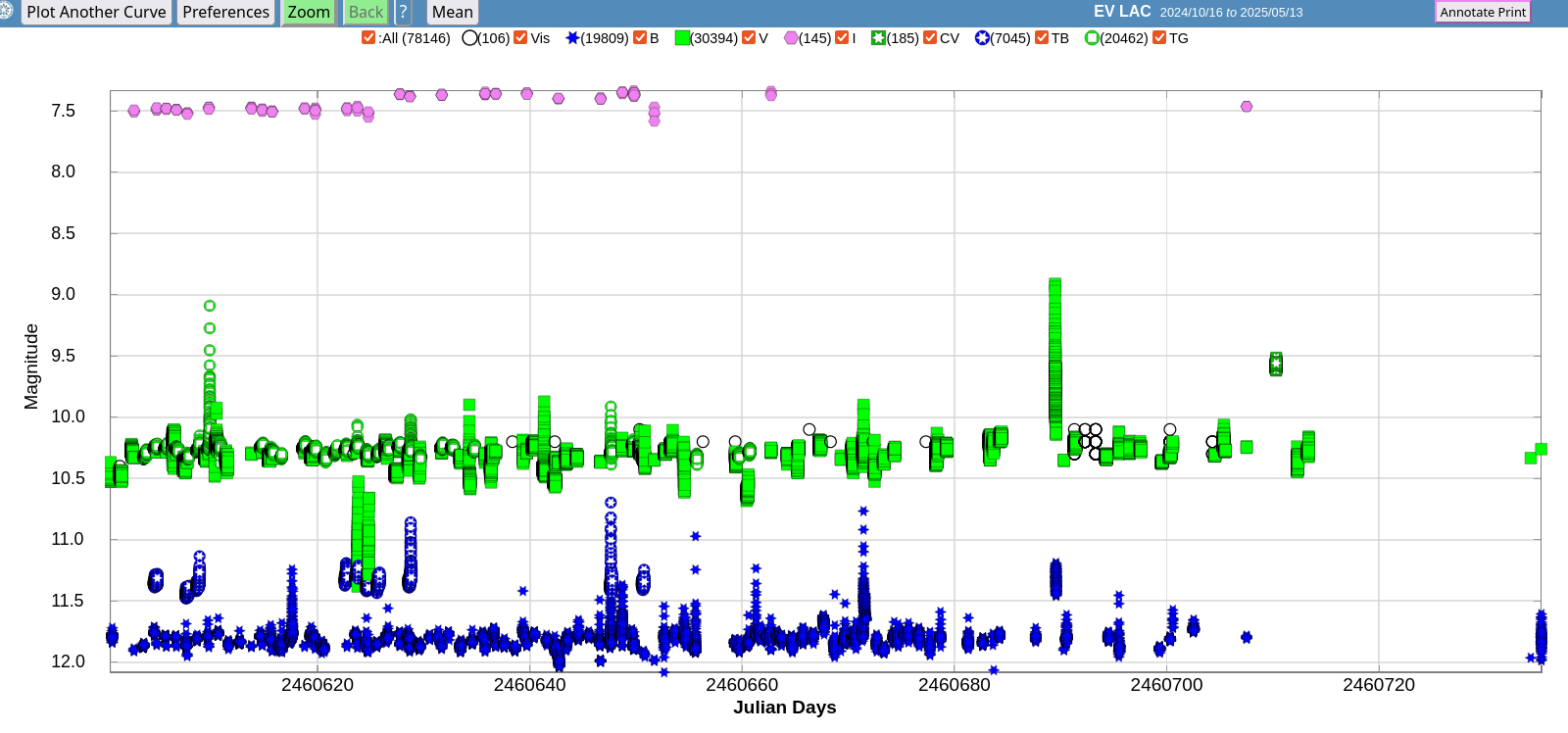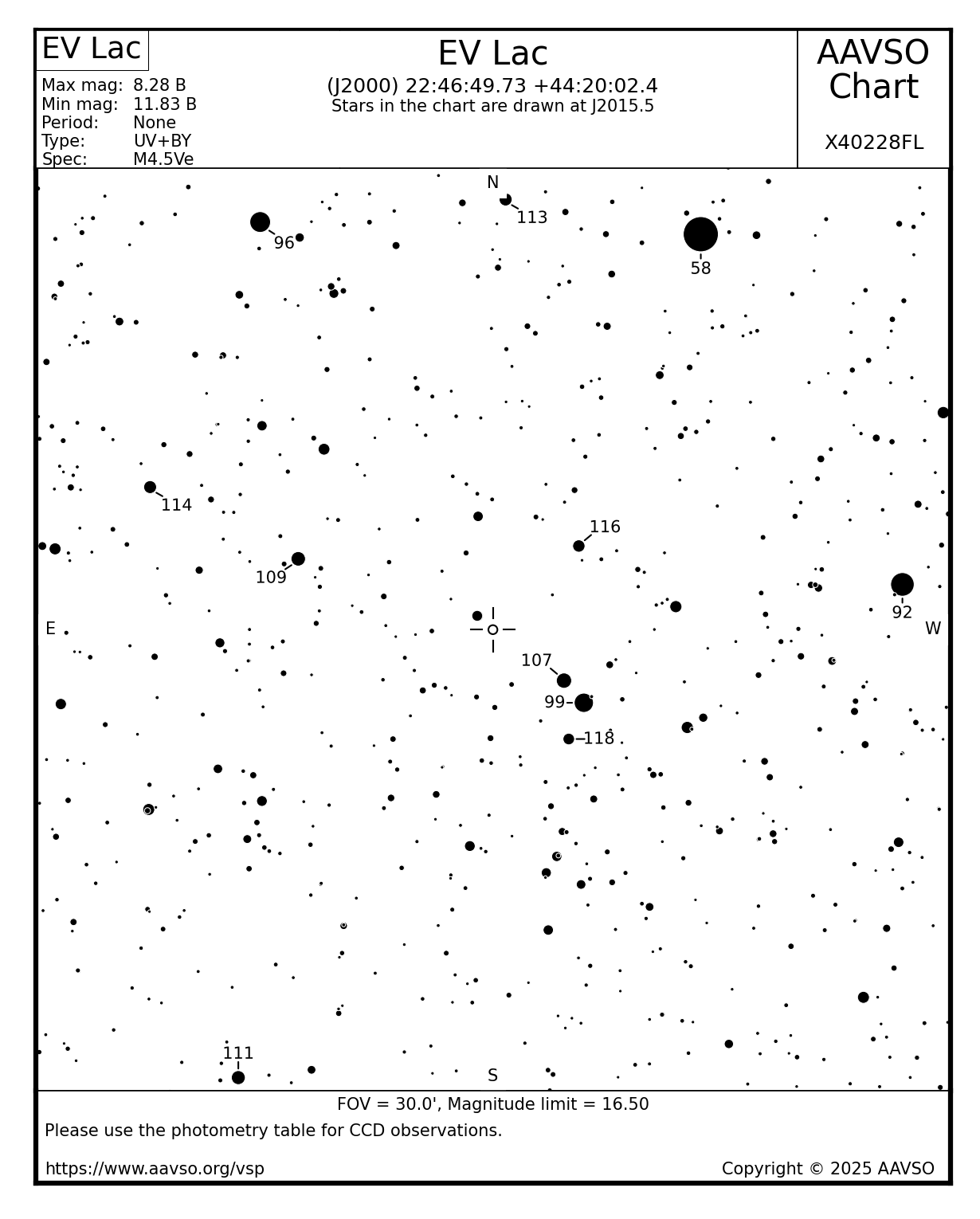
Some low-mass, cool, red stars produce frequent flares: brief outbursts of energy which can last only a few minutes, or several hours, and which can increase the star's luminosity by factors of two or more. What causes these violent events? It's not clear -- perhaps strong magnetic fields play a part.
In order to understand these flare stars better, some scientists have asked astronomers world-wide to monitor a few of them intensively. Campaign 880 of the American Association of Variable Star Observers (AAVSO) requests measurements of two stars in particular. One of them, EV Lac, will make a good target for observations during the summer months from Rochester.
Measurements by AAVSO observers over the past two hundred days show several strong flares.

EV Lac's quiescent magnitude is V=10.3. As the finding chart below shows, a number of good comparison stars, with similar brightness, lie only a short distance away on the sky.

The goal of this project is to collect as many measurements of EV Lac as possible during the summer months. We may use the 12-inch telescope, or attempt to use our new SeeStar S50 units.
This page maintained by Michael Richmond.